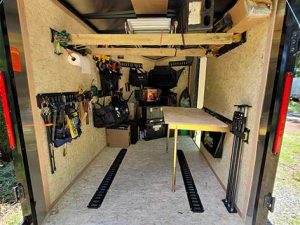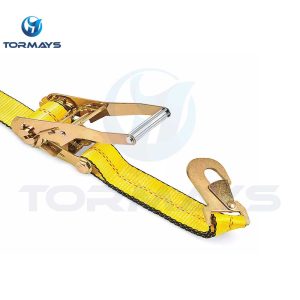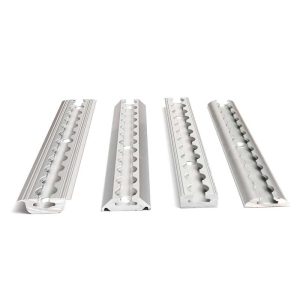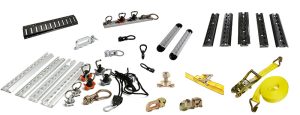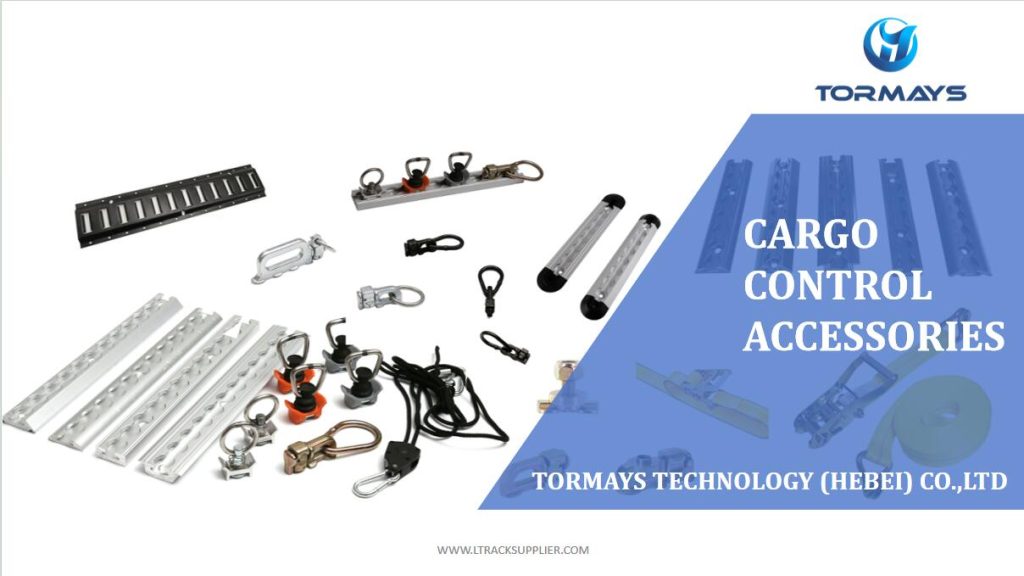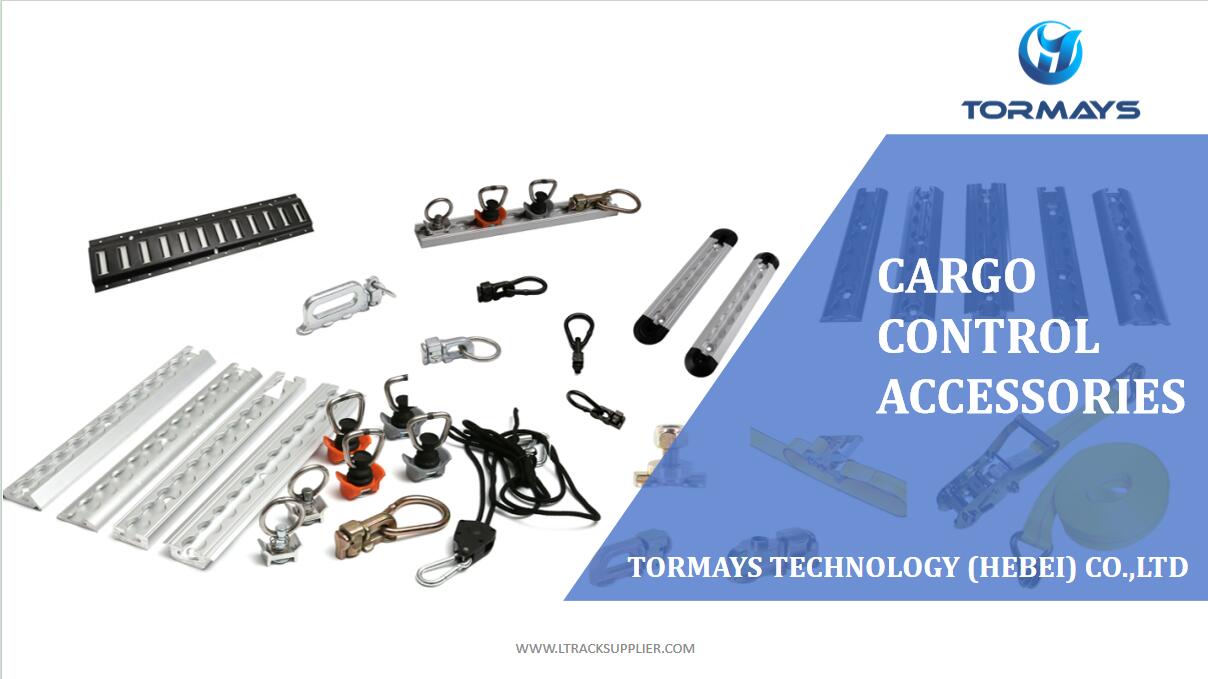L Track is a versatile, robust, and efficient system for securing cargo in a variety of settings, from trucks and trailers to vans and aircraft. This guide explores the functionality, benefits, and applications of L Track systems, helping you understand how it enhances cargo control and ensures safety during transport.
In this blog, we’ll dive deep into everything you need to know about L Track, including its structure, how it works, and practical insights into how it can make load securing safer and more efficient.
What is L Track?
L Track, also known as Logistic Track or Airline Track, is a type of cargo securing system designed to provide a flexible way to anchor loads in vehicles. Named for its distinctive “L” shape, this track is typically made from high-strength aluminum or steel and features a series of evenly spaced holes or slots along its length.
The key components of an L Track system include:
1. L Track Rail: The actual track that is mounted to a surface.
2. Fittings and Anchors: These snap into the holes of the track and provide points to attach straps, ropes, or other securing devices.
3. Straps and Tie-Downs: These secure the load by connecting to the fittings and holding cargo in place.
The modular design of L Track allows it to be customized for different load shapes and sizes, making it an ideal solution for industries where cargo varies frequently.
How Does L Track Work?
The functionality of L Track relies on its durable construction and modular design. Here’s a step-by-step breakdown of how it works:
1. Installation of the Track: L Track is mounted onto a surface such as the floor, wall, or ceiling of a vehicle. It can be installed horizontally, vertically, or even diagonally, depending on your cargo needs.
2. Insertion of Fittings: Special fittings or anchors, such as single-stud or double-stud fittings, are inserted into the holes of the track. These fittings lock into place with a simple push-and-twist mechanism.
3. Attachment of Tie-Downs: Straps, ropes, or bungee cords are attached to the fittings. These tie-downs secure the cargo and keep it from shifting during transport.
4. Load Securing: The tie-downs are tightened to ensure that the cargo is firmly held in place. The modular nature of L Track allows multiple points of securement for added stability.
This system makes it easy to adjust the securing points and accommodate cargo of various shapes and sizes, offering maximum flexibility and reliability.
Types of L Track
L Track comes in different types to suit various applications. Here are the most common types:
1. Standard L Track:
– This is the most common type, suitable for general-purpose cargo control.
– It is typically mounted on truck beds, trailers, and vans.
2. Recessed L Track:
– Designed to be installed flush with the mounting surface.
– Ideal for applications where a smooth surface is needed, such as van floors or aircraft interiors.
3. Angled L Track:
– This type features an angled profile that provides additional strength and stability.
– Common in heavy-duty applications or where extra load support is required.
4. Surface-Mount L Track:
– Mounted directly on top of a surface rather than being recessed.
– Easier to install and suitable for temporary setups.
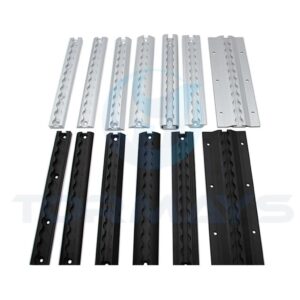
Each type of L Track offers unique advantages depending on the specific cargo and transport requirements.
Benefits of L Track Systems
L Track systems offer numerous advantages for cargo control. Here’s a look at why they are so popular:
1. Flexibility:
– L Track can secure a wide variety of loads, from small packages to large equipment.
– Fittings can be moved and adjusted to accommodate different cargo shapes and sizes.
2. Strength and Durability:
– Made from high-strength aluminum or steel, L Track can withstand heavy loads.
– Resistant to wear and tear, ensuring long-term reliability.
3. Ease of Use:
– Quick and easy to install and operate.
– Fittings snap into place effortlessly, reducing setup time.
4. Space Optimization:
– The track can be mounted on floors, walls, and ceilings to maximize cargo space.
– Helps organize and secure loads efficiently, reducing wasted space.
5. Safety:
– Prevents cargo from shifting during transport, reducing the risk of damage and accidents.
– Ensures compliance with load-securing regulations.
6. Customizable:
– Available in different lengths, finishes, and mounting styles.
– Can be tailored to fit specific vehicle needs and cargo types.
Common Applications of L Track
L Track systems are incredibly versatile and used across various industries. Here are some common applications:
1. Cargo Vans and Trucks:
– L Track helps secure packages, tools, and equipment during transport.
– Popular with delivery services, contractors, and tradespeople.
2. Trailers:
– Ideal for securing motorcycles, ATVs, and heavy machinery.
– Provides multiple tie-down points to ensure stability.
3. Aircraft:
– Originally developed for the aviation industry, L Track is used to secure cargo in aircraft holds.
– Meets stringent safety standards required for air transport.
4. RVs and Camper Vans:
– Helps organize and secure gear, furniture, and supplies.
– Makes traveling with heavy or bulky items safer and more convenient.
5. Wheelchair Securement:
– L Track systems are used in vehicles to secure wheelchairs, ensuring passenger safety during transport.
6. Marine Applications:
– Used in boats to secure gear and prevent items from moving in rough waters.
How to Install L Track
Installing L Track is a straightforward process, but proper installation is crucial for safety. Here’s a step-by-step guide:
1. Gather Tools and Materials:
– L Track rail
– Fittings and tie-downs
– Screws or bolts (stainless steel for durability)
– Drill, measuring tape, and screwdriver
2. Plan the Layout:
– Determine where the track will be mounted (floor, wall, ceiling).
– Mark the positions for the screws or bolts.
3. Drill Holes:
– Drill holes in the marked positions.
– Ensure the holes align with the mounting points on the track.
4. Secure the Track:
– Attach the L Track to the surface using screws or bolts.
– Ensure the track is flush and securely fastened.
5. Test the Installation:
– Insert fittings and apply force to ensure they hold securely.
– Test the system with a light load before securing heavy cargo.
Maintenance Tips for L Track
To keep your L Track system in top condition, follow these maintenance tips:
1. Regular Inspections:
– Check for signs of wear, corrosion, or damage.
– Replace worn fittings or tracks as needed.
2. Clean Regularly:
– Remove dirt, grease, and debris from the track and fittings.
– Use mild detergent and water to prevent corrosion.
3. Lubricate Fittings:
– Apply a light lubricant to the fittings to ensure smooth operation.
4. Avoid Overloading:
– Follow weight limits specified by the manufacturer.
– Overloading can damage the track and compromise safety.
Conclusion
L Track systems offer an efficient, flexible, and reliable solution for securing cargo across a wide range of industries. With their strength, ease of use, and versatility, L Track systems help ensure safe transport and compliance with cargo control regulations.
Whether you’re a contractor securing tools, a traveler organizing your van, or a logistics company handling deliveries, L Track provides the peace of mind that your cargo is secure. By understanding how L Track works and applying proper installation and maintenance practices, you can optimize your cargo control solutions and ensure safe and efficient transport.
Invest in an L Track system today and experience the benefits of safer, more organized cargo management!

